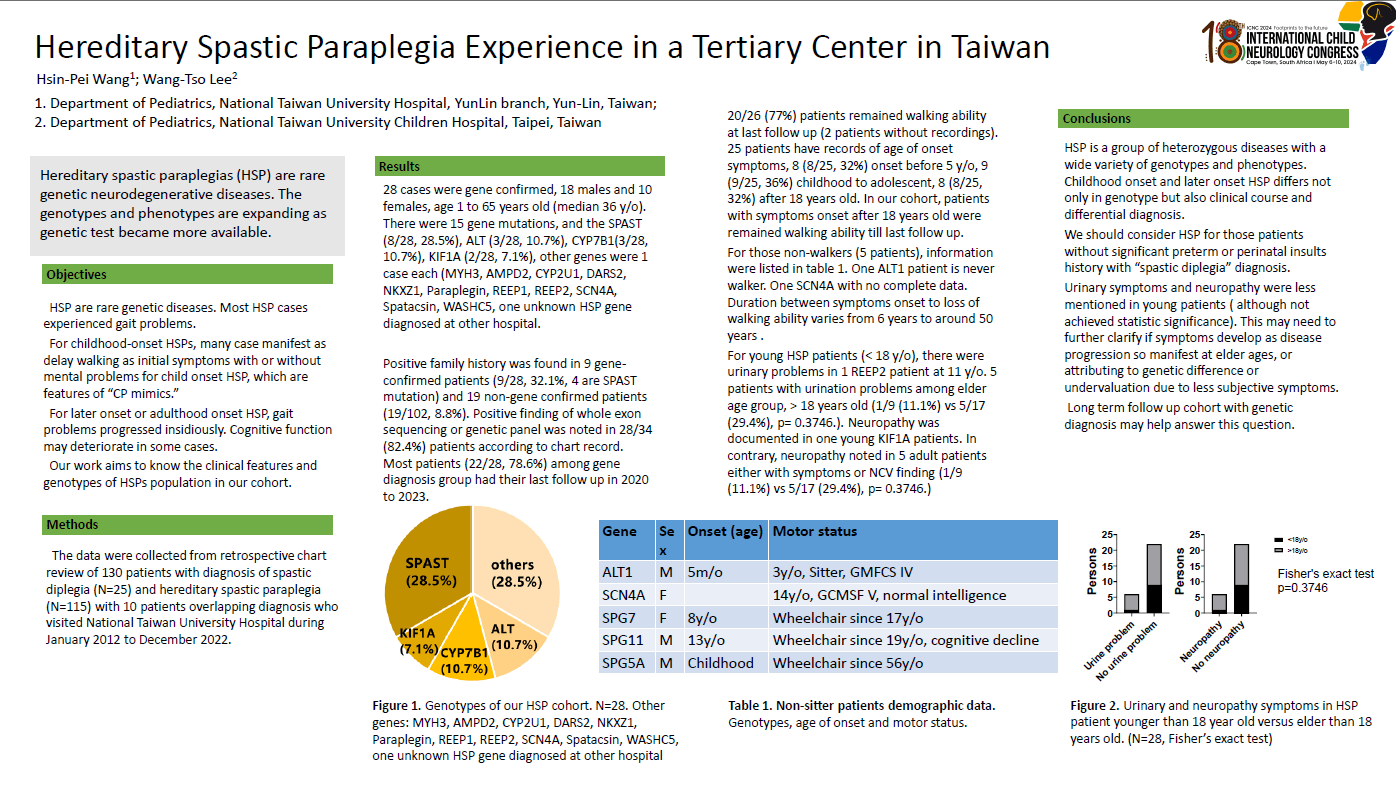Hereditary Spastic Paraplegia Experience In A Tertiary Center In Taiwan
Introduction: Hereditary spastic paraplegias (HSP) are rare genetic neurodegenerative diseases. The genotypes and phenotypes are expanding as genetic test became more available. Objectives: Our work aims to know the genotypes and epidemiology of HSP in Taiwan. Methods: The data were collected from retrospective chart review of 130 patients with diagnosis of spastic diplegia (N=25) and hereditary spastic paraplegia (N=115) with 10 patients overlapping diagnosis who visited National Taiwan University Hospital during January 2012 to December 2022. Results: 28 cases were gene confirmed, 18 males and 10 females. There were 15 gene mutations, and the SPAST (8/28, 28.5%), ALT (3/28, 10.7%), CYP7B1(3/28, 10.7%), KIF1A (2/28, 7.1%), other genes were 1 case each (MYH3, AMPD2, CYP2U1, DARS2, NKXZ1, Paraplegin, REEP1, REEP2, SCN4A, Spatacsin, WASHC5, one unknown HSP gene diagnosed at other hospital). Positive family history was found in 6 gene-confirmed patients (6/28, 21.4%, 4 are SPAST mutation) and 19 non-gene confirmed patients (19/102, 8.8%). Positive whole exon sequencing was noted in 28/34 (82.4%) patients according to chart record. Most patients (22/28, 78.6%) among gene diagnosis group had their last follow up in 2020 to 2023. Conclusion: There was wide diversity in genetic test results in HSP patients. SPAST mutation comprises most HSP cases in our cohort with variable symptom onset ages. There were room for encouraging long term follow up and genetic study in HSP population.
HSIN PEI WANG
Taiwan
Wang-Tso Lee
Taiwan

Wang-Tso Lee
Taiwan